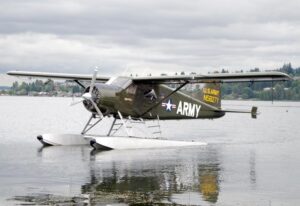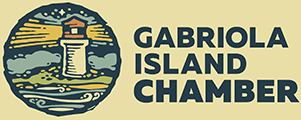
The de Havilland Beaver is arguably the best bush plane ever built. It is officially known as the de Havilland Canada DHC-2 MK1, conceived and built in Downsview, Ontario, Canada. The Beaver was reliable, sturdy, and able to land on short lengths of water, land, and snow. The aircraft is purpose-built and is capable of carrying heavy loads into rough and confined areas.
In August 1947, the beaver made its initial flight. After that the first production Beaver was delivered in 1948, and by the end of production in 1967, about 1,650 MK1 Beavers had been built. While de Havilland produced it for only 20 years (1947-1967), many Beaver planes still fly today.
History of the de Havilland Beaver
Shortly after World War II, de Havilland turned its attention to civilian aviation. They determined that they would make a purpose-built aircraft that would thrive in the harsh Canadian wastelands. They then hired Punch Dickens, a pioneering bush pilot who solicited suggestions for a new aircraft through a market research survey asking what the pilots needed in terms of aircraft capabilities.
Dickens received many requests for a powerful short take-off and landing aircraft (STOL) that could fly on floats, skis, or wheels. He warned that such a plane would have poor flight performance, but to the pilots, speed was not a priority as long as it would be faster than a dog sled and would carry large loads into remote areas.
De Havilland hired five engineers in 1946 to develop the new aircraft. The team came up with an all-metal design with a single-engine, incorporating all the features requested by the pilots. The de Havilland Beaver was named after the mammal since all the de Havilland Canada airplanes were named after animals.

The de Havilland Beaver made its debut flight in 1947. It saw service in the African deserts, polar regions, and airfields high in the Andes. Its service in Antarctica was so remarkable that they named a lake, island, and glacier after it.
By 1965, about 1,600 beaver planes were operating in 63 countries. The biggest customer was the US army; they used the aircraft in the Korean War. The US military ordered over 960, and they designated the plane as the L-20A and U-6A. In 1967, de Havilland stopped producing the beaver. The drawings and tooling for the plane were sold to Viking air of Sydney, British Columbia.
The Canadian engineering centennial board in 1987 named the Beaver one of the top 10 Canadian Engineering Achievements of the 20th century. Many Beavers still fly today, although it is common for engineers to have modified them.
Key features of the de Havilland Beaver
The Beaver’s most remarkable features are those the surveyed bush pilots requested. The combination of these features makes the Beaver unique and has led to its longevity and success as a work plane for bush pilots and the military. A plane’s capability to excel in short take-offs and landing (STOL) is critical in the Canadian backwoods.
De Havilland director Phil Garratt called it a “half-ton flying pickup truck” since it could carry a pilot, six passengers, and heavy loads.
Powerful engine and wings
The de Havilland used to be a British-owned company; therefore, the airplane was initially designed for British engines. It has a huge wing which helps to maintain the STOL performance. The DHC-2 got a more powerful engine when the de Havilland was offered the
supply of war surplus 450-hp, nine-cylinder radial R-985 Wast junior engines at a low price. This is the key to its quality STOL performance, especially for a heavy aircraft weighing 5,000 pounds.
The wings are long, with a span of 48ft. The long wings paired with its powerful engine generate substantial lift as designed by engineer Richard Hiscocks.
Cargo doors
The Beaver is structured to be a work plane. The bush pilots had vital cargo to carry between towns and villages, and so they asked for a half-ton payload. The de Havilland Beaver was designed with full-size cargo doors on either side of the aircraft. It was configured so that the bush pilots could easily load and unload the said cargo, even if it were large and bulky. The doors were made wide enough to load over 55-gallon drums.
Aileron and flap use
To further improve the beaver’s STOL performance, its ailerons and flaps were designed to be lowered during take-off, unlike most aircraft. This unique design also generates additional lift.
General specifications of the de Havilland Beaver DHC-2
- Capacity: 1 pilot and 6 passengers
- Length: 30ft3
- Height: 9ft
- Empty weight: 3000lb
- Gross weight: 5,100lb
- Wingspan: 48ft
- Engine: 1x Pratt & Whitney R-985 wasp junior radial engine, 450hp
- Fuel capacity: 138 gallons
Performance
- Cruise speed: 137mph
- Maximum speed: 179mph
- Range: 578 miles
- Service ceiling: 18,000ft
- Rate of climb: 1,299ft/min
Ready to fly a beaver?
All this talk of backcountry flying has you ready to fly a beaver? Prepare for that trip with Gulf Island Seaplanes today, with our very own beaver registered as C-FHRT. We offer regularly scheduled and chartered floatplane services to places on the west of British
Columbia, with a wide range of destinations to choose from.
All this talk of backcountry flying has you ready to fly a beaver? Prepare for that trip with Gulf Island Seaplanes today, with our very own beaver registered as C-FHRT. We offer regularly scheduled and chartered floatplane services to places on the west of British
Columbia, with a wide range of destinations to choose from.
We provide our guests with the opportunities to witness and explore the beautiful scenery and wildlife of the west coast. Please find out more about these tours and other partnered experiences we offer to our clients here.





